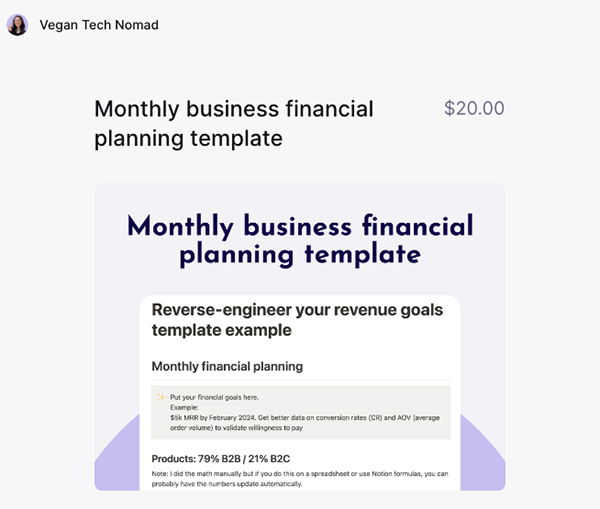How Jennifer Went Viral And Grew Her Newsletter To 12,000 Subscribers In 14 Days

Jennifer Chou • Published March 6th, 2024
SIDE-HUSTLE STATS
15-20
Hours Worked Per Week
$5000+
Revenue Per Month
1
Founders
0
Employees
$165
Startup Cost
1
Months Before Profit
Main Growth Strategy
97%
Net Profit Margin
Table Of Contents
Working As A Growth Marketer and Growing Your Newsletter
🔑 Key Takeaways
Focus on high-leverage growth tasks rather than perfectionism
Use free templates to build distribution and let the market inform paid offerings
Transparent financial and planning details showing how she reverse-engineers scaling up revenue to $10k MRR.
- Volume allows for virality: aggressively posting large volumes of authentic content enables virality
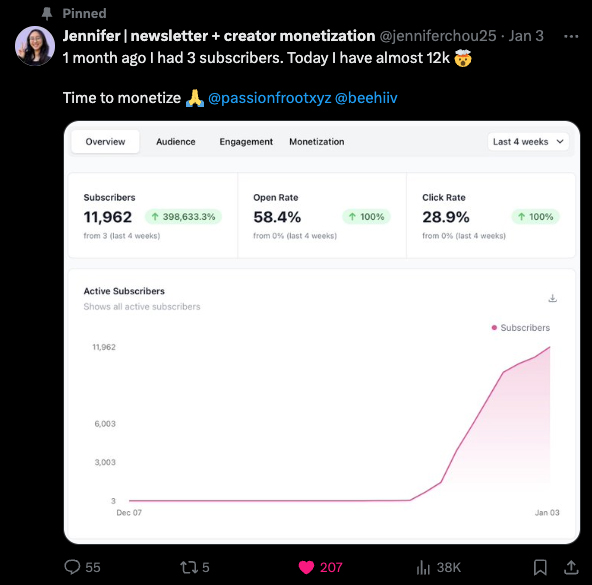
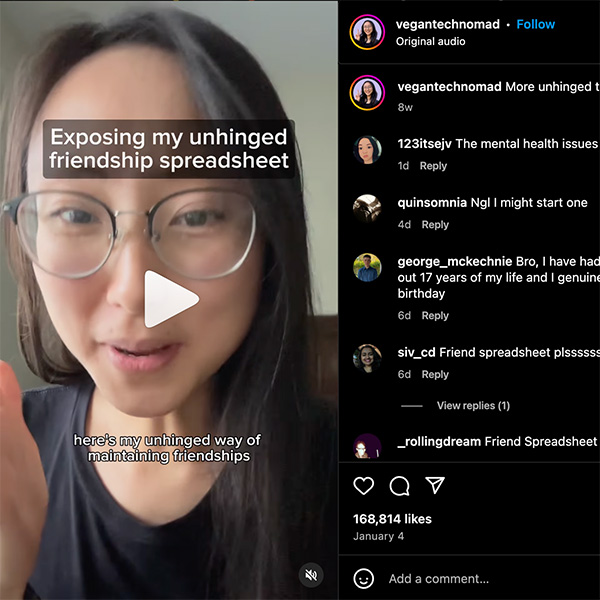
Coming Up With The Idea
What made you decide to start a newsletter business?
It was kind of unintentional. I always heard you had to collect emails. Otherwise, if you lose your social media account, that’s it. And you have to rely on the algorithm.
So I always had my newsletter link in my bio, and it was not active at all. I didn’t post anything. It didn’t even have any pictures or anything. It just said, “Coming soon.”. When I went viral on Instagram, a lot of emails started pouring in, and I was like, “Oh, now I have to write one so I don’t disappoint these people.”
Ever since, I’ve just been writing it every week or twice a week for premium subscribers.
Going Viral On Instagram
What type of content led to going viral and gaining 12,000 email subscribers in 14 days?
I actually posted content about my productivity systems multiple times. It just never took off. But I knew there was something there because everybody I talked to about this system was like, “Oh, this is so amazing. It’s so unique.” So I’m like, there’s something here.
I told myself that I was going to take this seriously in January. I started setting things up and scheduling all my TikTok posts for Instagram. And then one of the posts that I had already posted on TikTok that I just scheduled on Instagram went viral.
The timing was good because it was in December, and that’s when everybody’s trying to figure out their New Year’s goals and setting up healthier habits and resolutions. I think that’s why I went viral. I saw that, and I was like, “Oh, it looks like people like this productivity content.” Let me pull up some of the other Notion templates that I do. So I just made more videos, and two more videos also went pretty viral.
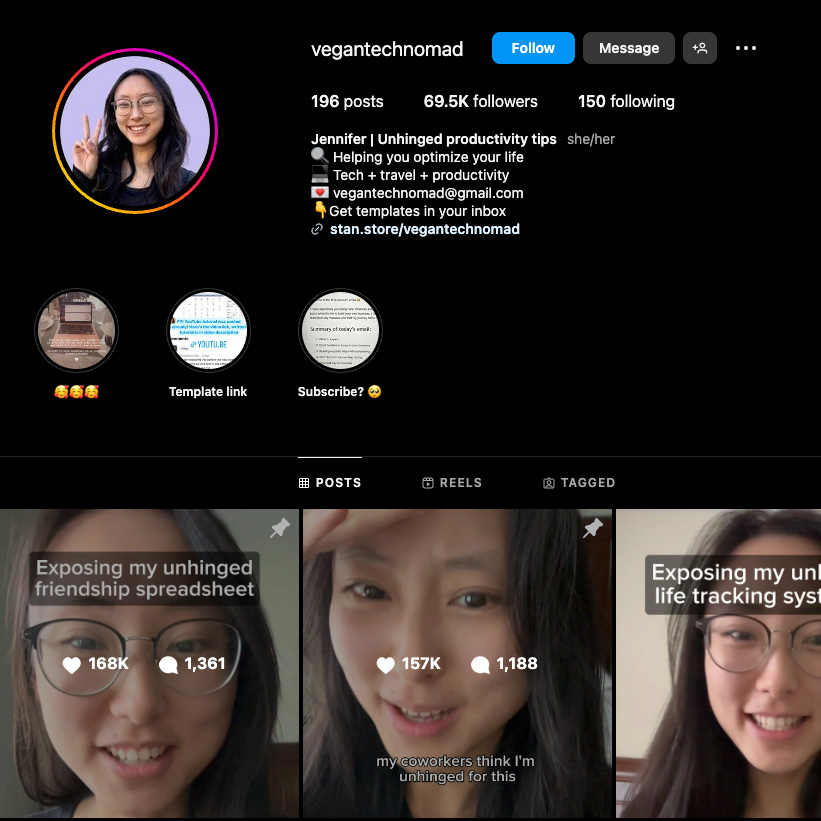
I was looking into the analytics today and some of the videos that got a lot of views and comments didn’t get me a lot of followers. It was the work documentation post that got me more followers, and I’m assuming email subscribers.
I’m going to focus more on work and work productivity now. I was going to focus on food and travel, but that content is too hard for me to make.
Building Trust With An Audience
Now that you've grown your email list, how do you build trust from the people who buy your products?
Yeah, I think personal branding is really big.
I have to sell stuff for my work, and people don’t trust you unless they know you. The difference between selling for work and for my own stuff was super stark.
I think people trust me because I’m more relatable. When I’m trying to sell work stuff, it’s like, “Oh, this is a company,” and you don’t know the person.
As for getting people to buy my products, I get some people saying that they can’t afford them, which I feel bad about, but it feels unfair to the people who’ve already paid if I just start giving them out for free. Plus, when you get stuff for free, you never use it. Whereas if you pay for something, you value it more.
I usually redirect those people to my free templates, not paid ones. Then, of course, my email newsletter is free. Some people told me they were saving up, which I thought was so nice.
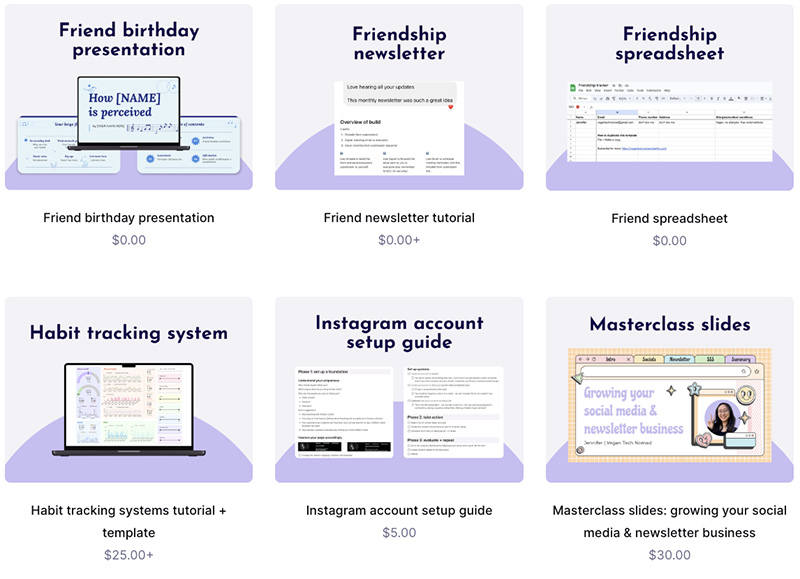
Building A Digital Product
Did you know creating Notion templates was a product people were willing to pay for?
For the notion templates, I just made them for myself. I learned how to create everything, had some creative ideas, and was like, “Why not just share them with people? I think it’ll help them.”
All my templates were actually free for two months. And I extended the free period because I thought I might as well help more people.
When I made it paid, I didn’t expect to make any money from it, but it turns out people are willing to pay. I was shocked. I had these documents about financial planning, and I sold a lot more than I expected.
Free Products = Fast Growth
Looking back, would you still have posted your paid content for free in the beginning?
I think I would still make it free, but maybe not for that long because I kept it free for like two months. Having it be free really helped with the growth, but I know I could have made a lot more if it was paid. I was kind of struggling for a while because I felt bad charging people for things I’d rather charge companies, like sponsors and stuff.
But I’m going to have multiple revenue streams anyway, and I feel like people don’t value this stuff unless I charge a little bit for it.
Getting Ad Sponsorships
How did you start getting companies to sponsor your newsletter?
Well, I went viral, which helped a lot. And when I started sharing everything on my newsletter everything was inbound. I never really had to reach out to too many sponsors unless it was like a company I really liked and a product I use. Then they would usually say yes.
The first sponsor I got found me from Twitter. They paid me like $300 and I only had around 10K subscribers. Back then, $300 bucks was so much to me because it was the first money that I made, and I didn’t even do anything. I hadn’t even sent out too many emails yet and they just paid me.
I think I undercharged a lot this month, but you live and learn. I gave a lot of discounts at the start because I’d rather build relationships and get testimonials so I can pitch to future sponsors. But I think I did that too much because some sponsors just said yes right away. And I was like, oh, I should have charged a lot more.
How To Price Ad Sponsors
How do you price your ad slots in your newsletters?
I think it depends on how many unique people are actually clicking sponsored links. I get a lot of sponsors from Beehiiv, which is the newsletter platform that I use. They send me people who want to put an ad in my newsletter, so I don’t have to do anything, but they do it on a cost-per-click basis.
So if a few hundred people click on the sponsored link, then they will pay me like $2 or $3 per click. $3 is a lot, so it’s usually like $2.
I remember one of the emails I sent; everybody was really engaged with it, and I got a few hundred clicks. I made $600 from that one email. And I was so shocked. They kept wanting to sponsor me after. But I think people were just clicking on those links to support me.
What I found interesting was that sponsors were willing to pay more for my newsletter than for Instagram. And I noticed that the results for Instagram aren’t always good, even though I have the DM automation setup, which sends them a direct link when they engage with the post.
Sometimes Instagram just doesn’t do well, or people don’t see it. But if it’s in their email inbox, they get it for sure. So I think sponsors are more willing to pay for that.
Last month I made a mistake because somebody offered me $1,000 for three ad placements in my newsletter for three weeks, so all of my March’s ad slots are basically gone.
So I was like, dang, $1,000 is like $300-something per email, but I know I can get more than that. The thousand dollars just shook me because when you have a big number like that, I’m like, oh my God, yes. But when I do the math, this isn’t that great.
Growth Strategies
What are your growth strategies today?
I specialize in Instagram videos because I had to do that for my work. And I was just spamming videos, even if they weren’t really good. As long as I just kept posting, people would see them. This and lead magnets helped a lot.
In my videos, I’ll have this insane hook and then be like, hey, if you want to have this template, comment something below, and I’ll DM the link directly.
They don’t have to sign up for my email list to get it, and I think people appreciate that they don’t have to become subscribers to get the link directly. I also promote myself everywhere. That way, I get higher quality subscribers. So that’s one way that I used to grow my personal brand.
For my work stuff, it’s just constantly making videos and promoting everywhere. We also grow using Facebook ads. But I test videos on TikTok and then take the best ones and use them as Facebook ads.
For Twitter, I feel like I don’t really grow that much from it. It’s more so I can look back and see what I’ve done and where I post all my learnings. It’s very stream of consciousness. At the end of the week, I read through it and consolidate it for my premium newsletter subscribers. So Twitter just helps me keep organized.
Most of my money comes from my own networks, like sponsors or Instagram reels. I have a whole bunch of tips for Instagram reels. But, to be honest, it’s going to depend a lot. I have one agency client where I’m doing reels for him, and for some reason they’re getting zero views on TikTok. I think it’s because we’re not posting enough. We’re only posting 30 videos per month.
#Buildinginpublic Benefits
What are the benefits of #buildinginpublic?
I’ve been building in public and getting lots of good advice from people. I know not everyone’s comfortable sharing so much stuff in public, but it’s really helped me.
I didn’t know if I wanted to do agency work, but because somebody told me to validate, I was like let me try it out to validate that concept.
Someone also told me to sign up for MentorCruise, which I didn’t know was a thing, so I signed up. I didn’t expect to get anything, but I actually have two mentees now. I priced myself too low again. But I get a few hundred dollars a month extra from that.
It’s been really cool just seeing people’s problems because they also want to start side hustles. As a mentor, I’m going to try to help them. But I’m like, oh my God, I don’t know how to tell you this, but you’re doing a lot wrong. That’s why I said taking action is so important because you have to get data to validate your assumptions. I feel like a lot of people build stuff and then try to distribute it, but you didn’t build the right thing.
My first startup, which was also in education, was spent worrying too much about the small stuff, like agonizing over which words to use in emails and stuff. But that doesn’t even matter. So with this one, I focused on distribution first, and then I figured out all the products and everything else after.
Social Media Posts Per Day?
How often do you post on social media?
It’s going to sound insane. But for my work TikTok account, the way we grew was by posting five times a day.
I batch filmed everything, and some of them were only seven-second videos. I just filmed my screen being like, “Hey, this exists,” so it didn’t take too much time, and I had so many videos.
And I was like, okay, this is going to become outdated if I schedule it for like one month later. So I needed to post it immediately, and it ended up being 3 to 5 times a day, almost every day, except on weekends. So it was a lot. But that’s how we had a big spike.
We grew from zero followers to like 20K on TikTok. And then we grew even more after I started getting better and posting at least once a day. Most of the growth doesn’t come from consistency. It comes from that one post that does well and takes off. And all the followers come from that one post.
You can’t really get to that one post until you post a lot, your videos get better, and you kind of understand what people like to see. I think this only works well on TikTok because everything is so short-lived there. I would just post everything on TikTok and then see what does well, and then use that to post everywhere else, like Instagram and ads.
Revenue + Earnings
How much do you earn from your newsletter?

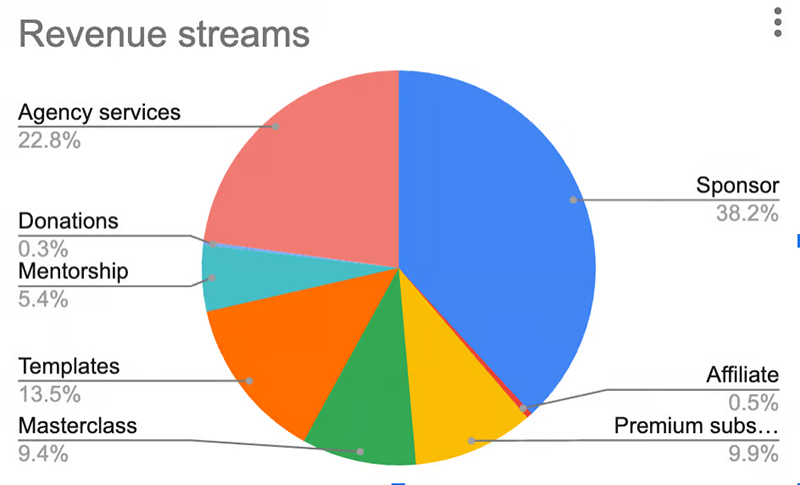
This is the email that I’m going to send out tomorrow. I created a whole financial planning template for what I was going to do in February. But these were my income expectations.
I expected to make more from B2B than B2C, but it ended up being more 50/50. I do cash basis accounting, not accrual. So I made almost $2,000 from selling templates this month, but half of that money will not hit my bank account until March. So I count that as March revenue, not February.

It’s more like 38% and 61%. This is my forecast vs. what actually happened. I calculated my time spent, and what the revenue streams were, then outlined it all here. My plan for March is to double this by reverse engineering week by week what I need to get done.
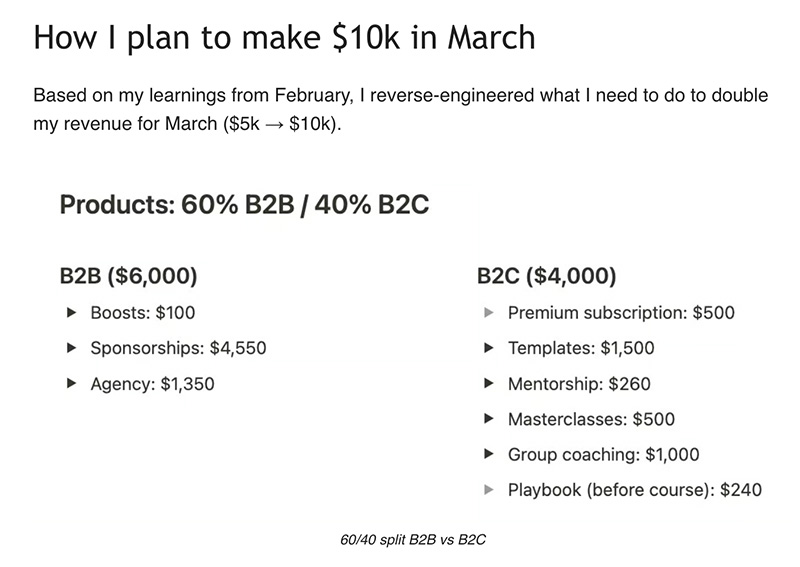
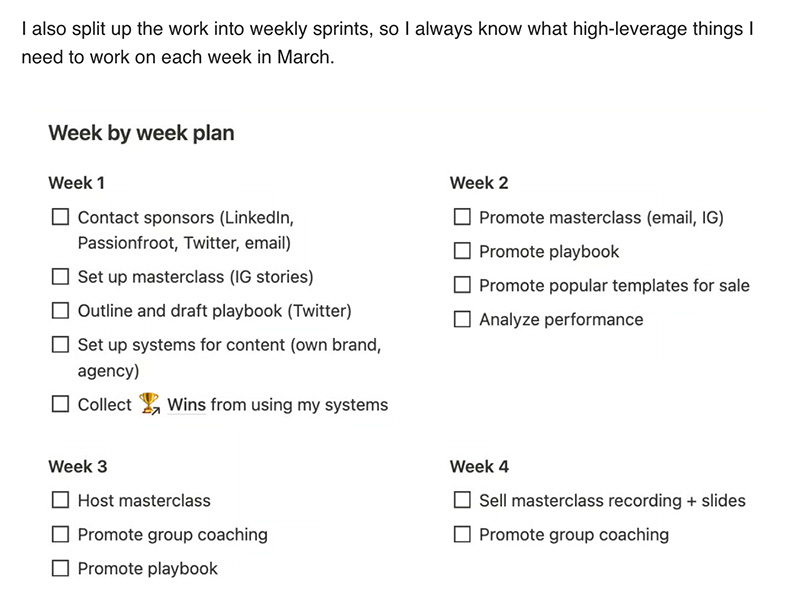
High Leverage Focus vs. Distractions
With a full-time job and a rapidly growing personal brand, how do you know where to focus your time? Can you share an example?
I just want a place for people to reach out to me, sponsor me, and then buy from me.
I have this Beehiiv site linked in my bio on Instagram. And every time people comment on my post, they say they can’t find my templates.
Even though my post says they have to click on the link, it’s too many clicks. That’s why I was like, I should probably link my storefront there. This way, they can just click once and see all the templates in one place instead of having to sift through all my other posts, including the premium posts, which is multiple clicks.
Now I say, “DM me this keyword, and I’ll DM you the direct link to purchase.” Then they just have to click the purchase button, and that’s it.
I need to improve my website a lot. I’m sorting out some technical issues with my domain name, but this is not worth my time right now when I could be getting thousands of dollars from sponsors.
So I’m emailing sponsors more than I’m fixing up my website, which isn’t really going to pay me money right now. It’s just picking what to work on that’s higher leverage, which is why I did that whole financial planning thing that I shared earlier.

Tech Stack & Expenses
What’s your tech stack?
Most of these tools are free (some include affiliate links to support Jennifer).
Content admin work
Notion: documentation + ideas
Kale (North America only): get paid for your videos
Metricool: scheduling + analytics
ManyChat: DM and comment automation
Archive: see and save story tags
Tally.so: feedback forms
Content creation
GummySearch: content ideation
Phone camera: filming (turn off HDR mode)
Loom: YouTube
CapCut: editing
Audionotes: brainstorming (use code JEN for % off)
Website
Beehiiv (paid once I reached 10k+ subscribers): newsletter
Google Analytics, Tag Manager, Search Console, MS Clarity: analytics
Mida: AB testing
Calendly (with Stripe integration): meeting booking

Final Tips & Advice
Do you have any final tips or advice to share to people starting a newsletter business?
I think it’s just to stay consistent, look at the data, and then adjust accordingly.
I started years ago, and it really sucked, like nobody was watching anything. But since I stuck with it almost every day for years, it finally paid off. So just stay consistent, mainly.
I wrote every day for my work newsletter every single week. This got me to experiment with longer content, but it felt very convoluted, and nobody understood what I wrote. So that’s why in all of my newsletters now, they have a lot of headings, and they’re very easy to read. There are bullet points, images, and stuff. You improve the more consistent you are. And it doesn’t have to be every day. It can just be every week or every month.
